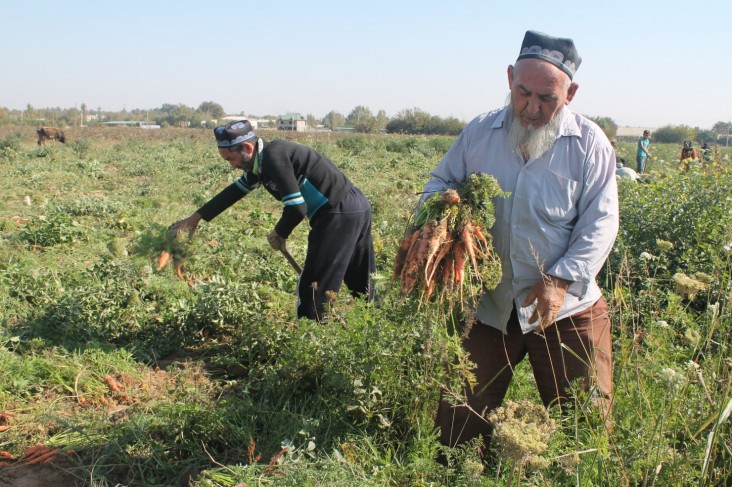
Jan. 2015—Davlatdiyor Shohrahimov lives with his large extended family of 18 in the village of Rudaki, located in the Qumsangir district of southern Tajikistan. The farmland there is irrigated by a Soviet-era irrigation canal which, until recently, was in severe disrepair, without adequate maintenance for the last 12 years.
The poor state of the canal limited the availability of water, preventing Shohrahimov, 66, and his neighbors from harnessing the full potential of their land. As a result, farmers could only plant a single harvest’s worth of cotton and wheat during the year instead of sowing a second harvest or a variety of other crops for home consumption or sale in the district market.
USAID directly addresses the shortage of water in Tajikistan’s rural areas by organizing local water user associations, involving the groups in irrigation water management, and providing engineering advice and funds to make irrigation infrastructure improvements. Shohrahimov and his neighbors established a new association in May 2013—the Bahoriston-2013 Water User Association. With USAID funding, the association cleaned 10 kilometers (6.2 miles) of canal and installed 34 new water control gates and an irrigation pump.
The repairs improved the availability of irrigation water in the village, and farmers at the end of the canal are now receiving an adequate supply of water. An additional 100 hectares (247.1 acres) of land in the village are now under irrigation for the first time in over 20 years.
In 2014, with more water available to him, Shohrahimov planted a wider variety of crops, with several successful harvests on the same plot. After harvesting onions late in the spring, he planted and harvested corn and sesame, followed by a crop of carrots.
“With sufficient irrigation water, I was able to plant three harvests this year on the same plot. The higher yield generated additional income, helping me improve my family’s standard of living,” he said. His income was about $3,000 more in 2014 than the previous year.
The USAID Family Farming Program runs from September 2010 to February 2015. As part of its support of the U.S. Government’s Feed the Future initiative, USAID aims to reduce poverty through improved nutrition and agricultural growth in 12 districts in Tajikistan's Khatlon province. The program supports irrigation water management policy reform and works with water user associations to improve their ability to manage irrigation water resources. Earlier components of the project focused on improving household nutrition and economics and increasing agriculture and livestock productivity. To date, more than 148,000 households have benefited from the program’s activities.
LINKS
Follow @USAIDCtrAsia, on Facebook, on Flickr, on YouTube







Comment
Make a general inquiry or suggest an improvement.